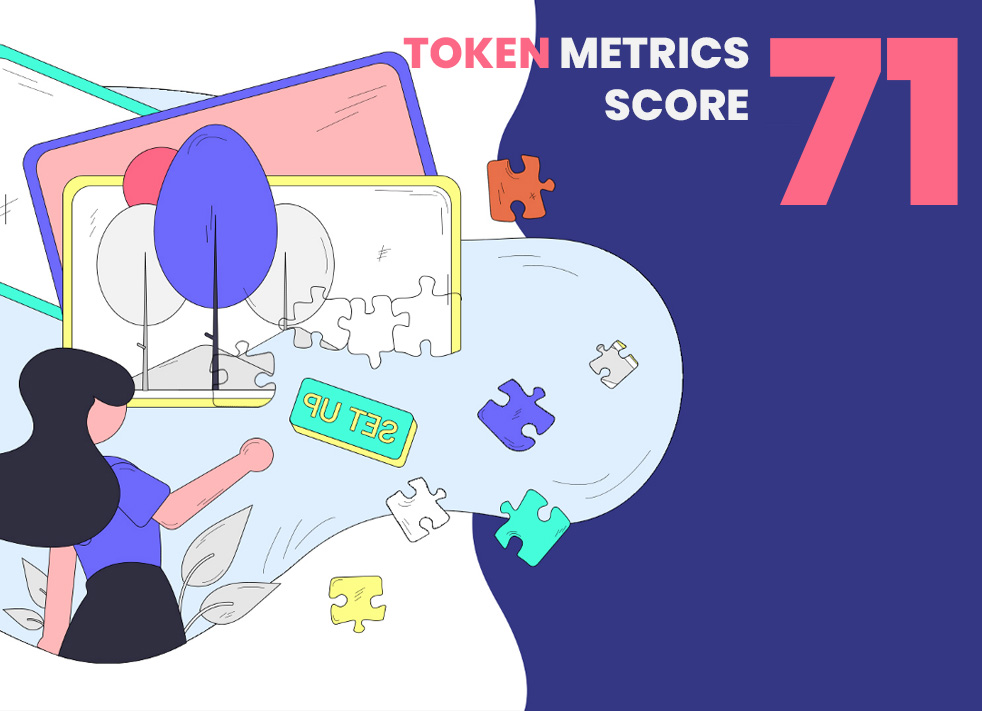Web 3.0 : What Does Web 3 Look Like? | Deep Dive
Review Date: April 29th, 2021 |
WHAT DOES WEB 3.0 LOOK LIKE? WHAT WAS WEB 1.0 AND WEB 2.0?
Web 3.0 is best explained in the context of its predecessors, web 1.0 and web 2.0. Web 1.0 is the basic web of the early days of the internet. This web represented the information economy, it was a platform economy, which is dominated by corporations such as Facebook and Google. Web 2.0, gives users the ability to read and write on pages; allowing them to share information with other internet users.
The problem with this is that users don’t have true ownership of what they share on these platforms and the internet is now dominated by a few massive corporations. These issues are solved with Web 3.0. Web 3.0 represents the token economy created by decentralized autonomous organizations (DAOs), which give users the ability to read, write, and own their internet assets and information as well as become a part of the DAO themselves. Web 3.0 seeks to use blockchain to detach from the server-based models of the internet giants, and decentralize data architecture across the board.
Web 3.0 projects are popping up all over the crypto space, and Token Metrics we want to be the ones to help you find the next Google. The space is already becoming cluttered and we are here to make sense of what is diamond, and what is rough. One of our favorite Web 3.0 projects is Theta.tv, a streaming service similar to Twitch. We like Theta because if you visit the website you would almost never know that it is blockchain based, and that its native currency is TFUEL is actually itself a cryptocurrency. This is the future of the internet, it may be that each website you visit has its own native currency, but if you are still getting use out of the good or service that the site is providing, does it really matter?
WHY WILL WEB 3.0 BE BUILT ON ETHEREUM, AND WHAT KIND OF VALUE DOES THIS ADD TO THE ETHEREUM BLOCKCHAIN?
Web 3.0 is already being built on Ethereum. This is evidenced by the massive margin in the number of active developers on Ethereum compared to any other blockchain. Ethereum has over 2,300 active monthly developers, meanwhile Bitcoin, the next closest blockchain by developer count, has about 500. And the number of active developers on Ethereum is increasing by over 300 developers per month according to a report by Electric Capital. Developer count is important to look at when looking at the value it could add to Ethereum and Web 3.0 because developers build the applications that eventually attract new users and customers, which in turn attracts even more developers. The more developers, the more applications, the more users, the greater the value possessed by the Ethereum blockchain.
This is not to say that competing chains like Polkadot and Cardano will be swallowed up by Ethereum, the Web 3.0 ecosystem will be interoperable. In fact, the Polkadot ecosystem represents many great opportunities to invest in Web 3.0. The central organization behind Polkadot is the Web3 Foundation and their mission is to nurture and support the decentralized web software protocols of the future.
Web3 has given grants to many great projects in the Polkadot ecosystem, including one of our personal favorites, Kylin Network. Kylin is a decentralized oracle network powered by Polkadot. Kylin contains five entities, data warehouses, data users, oracle nodes, arbitration nodes, and blockchain nodes. These five entities allow Kylin to provide reliable, trustless, and efficient solutions for applications requiring off-chain data. Kylin is a project we see possibly competing with other oracle networks such as Chainlink sometime in the future. While the Polkadot ecosystem provides us with lots of great speculative projects and concepts,
Ethereum will be the sun energizing the Web 3.0 solar system for the foreseeable future. Blockchain interoperability will not only strengthen the Ethereum blockchain, it will support the chains connecting into Ethereum by giving them access to the most used blockchain ecosystem in the world. Synergy between chains can add massive amounts of value for the entire crypto space. The greatest beneficiary of this synergy will be the chain that sits in the middle of it all, Ethereum.
WHAT ROLE WILL DEFI PLAY IN WEB 3.0?
The rise of Web 3.0 will be driven by the need for a decentralized financial system in underdeveloped nations where millions of people are unbanked or underbanked. The total value locked in DeFi at the time of writing is over $62B, a 7,000% increase from 12 months ago. No market segment or industry that I’m aware of has experienced that level of growth in the last year. DeFi will continue to decentralize the institutions the world has grown accustomed to. In doing so, DeFi will propel web 3.0 further into the public eye, bringing more developers and applications to DeFi, as well as other Web 3.0 apps.
Decentralized finance protocols such as Perpetual Protocol and Futureswap will continue to push the space, and our concept of finance further. At Token Metrics, we are especially interested in decentralized derivatives protocols like the ones previously mentioned. The way decentralized exchanges like Uniswap and Sushiswap have transformed spot trading, is evidence that soon, decentralized derivatives exchanges can transform the way we buy and sell derivatives. The Chicago Mercantile Exchange, the world’s largest derivatives exchange, handles over 3 billion contracts worth about $1 quadrillion annually.
That said, once some of that liquidity starts to find its way into decentralized exchanges, the potential for their growth could be seemingly endless. In the new decentralized economy, there will be far more opportunities for prosperity for those left out by the current financial system. DeFi has already sparked the largest transfer of wealth in human history and that wealth transfer will lead to massive investment in new Web 3.0 applications. Once DeFi takes over, other pieces of Web 2.0 will start to cross over into the Web 3.0 universe, especially streaming and gaming. Web 3.0 games and streaming services like Decentraland and Audius have already garnered massive support and funding in their relatively short existences.
WHY SHOULD PEOPLE CARE ABOUT WEB 3.0?
The potential uses of Web 3.0 are beyond what is conceivable. Most people are ignorant, or have only become recently aware of the amount of the influence that the internet monopolies have over them. Documentaries like The Social Dilemma and The Great Hack have only recently exposed people to the invasions of privacy exhibited by these corporations. Many saw those documentaries and were upset at the amount of power and information the tech giants have, but were unable to stop using the services because of how integral they’ve become to everyday life.
Many more were furious when Robinhood halted trading on Gamestop, but were unable to stop using the app because it is too great a hassle to switch investing platforms. With Web 3.0 users will be able to gain back control over their private data and trade whenever they wish. Ocean protocol allows users to privately store their data and sell it to whomever they please, not whoever pays for a targeted Facebook ad. Uniswap has already given users the power to become their own market makers and provide liquidity to traders and investors around the world.
These are both things that were once thought impossible to achieve for the average person, but with Web 3.0 even the impossible seems possible. In essence, Web 3.0 seeks to strip the power from the centralized firms controlling the internet by building an internet based on ideals, not corporations. Web 3.0 is the internet that Tim Berners-Lee dreamt of when he had the idea back in the 90s, a trustless and open internet.
Web 3.0 seeks to decentralize the application layer of the internet. This means that all the apps you know and love won’t have to be controlled by corporations, they can be controlled and governed by the end user. Web 3.0 gives users full ownership over their digital assets and collectibles. Most people are not aware that they don’t own Fortnite skins or battle axes, they simply pay Epic Games for the right to use them. With Web 3.0 and blockchain, gamers can own the clothes on their virtual counterpart no differently than they own their shirts on their backs. Once people achieve digital ownership, they will never relinquish it. This is just the tip of the iceberg for Web 3.0. Soon the centralized internet giants that ran Web 2.0 will be a distant memory, replaced by the decentralized titans of the new web.
DISCLAIMER
Token Metrics Media LLC is a regular publication of information, analysis and commentary focused especially on blockchain technology and business, cryptocurrency, blockchain-based tokens, market trends, and trading strategies.
Token Metrics Media LLC does not provide individually tailored investment advice and does not take a subscriber’s or anyone’s personal circumstances into consideration when discussing investments; nor is Token Metrics Media LLC registered as an investment adviser or broker-dealer in any jurisdiction.
Information contained herein is not an offer or solicitation to buy, hold or sell any security. The Token Metrics team have advised and invested in many blockchain companies. A complete list of their advisory roles and current holdings can be viewed here: https://tokenmetrics.com/disclosures/





